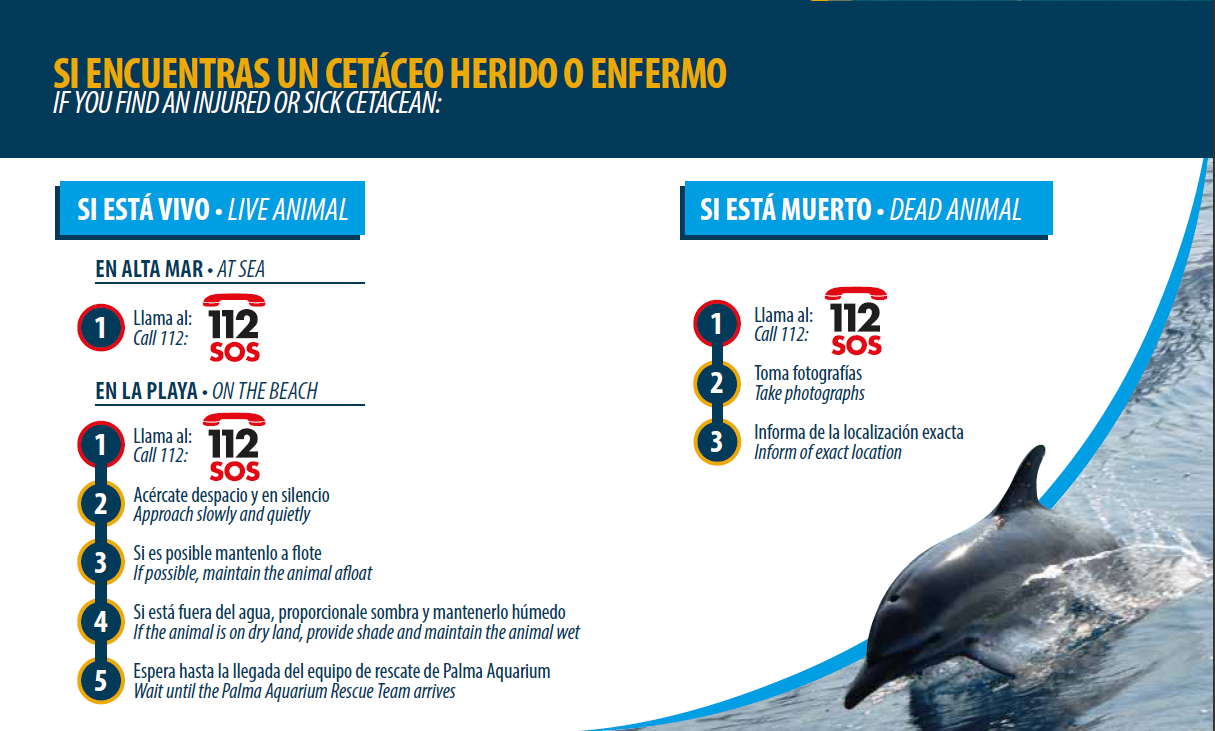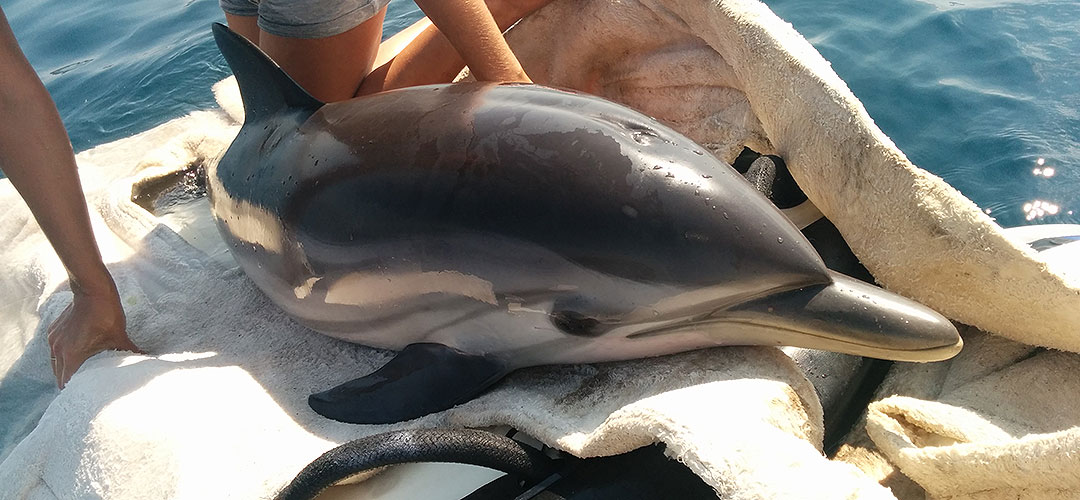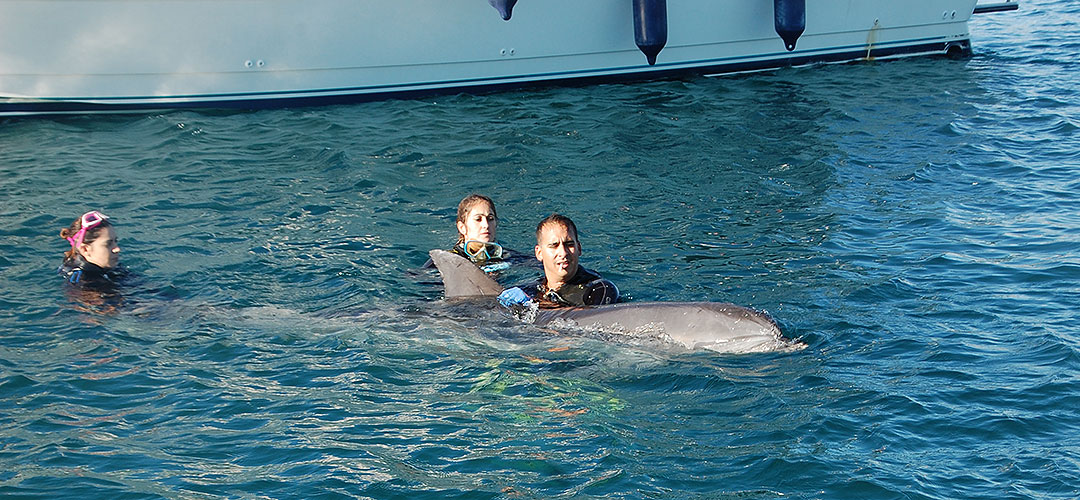Cetaceans
Rescue and rehabilitation.Authentic indicators of the health of marine ecosystems
Cetaceans are extremely vulnerable species and have become authentic indicators of marine ecosystems health. Their conservation problems are direct consequences of human activity. Sometimes they suffer critical situations that lead them to beach on the coast.
Stranding means the presence of a live or dead cetacean that is not in its marine environment or floating adrift near the coast or on the beach in a situation where it cannot return to water. A cetacean does not need to be sick or injured to be considered stranded, he may be confused or disoriented and needs help.
Currently in the Balearic Sea there are confirmed the presence of 8 different species of cetaceans, including Odontocetes (cetaceans with teeth) and Mysticetes (cetaceans with beards).

To assist live cetacean stranding’s, the Palma Aquarium rescue team goes to the area and gives the necessary assistance to the strandedspecimen in situ and coordinates the attention on the beach of the event until the recovery of the specimen. The transfer of live cetaceans would only take place in specific urgent cases.


What can I do until the arrival of the rescue team?

Discover our marine fauna rescue which also includes cetacean identification .
Cetaceans in the Balearic Sea
All of them are present in the “Spanish Catalogue of Threatened Species” in different categories: “vulnerable”, “endangered” and “critically endangered”.

Mediterranean Striped dolphin
(Stenella coeruleoalba)

Bottlenose dolphin
(Tursiops truncatus)

Common dolphin
(Delphinus delphis)

Long finnedpilot whale
(Globicephala melas)

Risso dolphin
(Grampus griseus)

Sperm whale
(Physeter macrocephalus)

Common fin whale
(Balaenoptera physalus)

Cuvier beaked whale
(Ziphius cavirostris)





